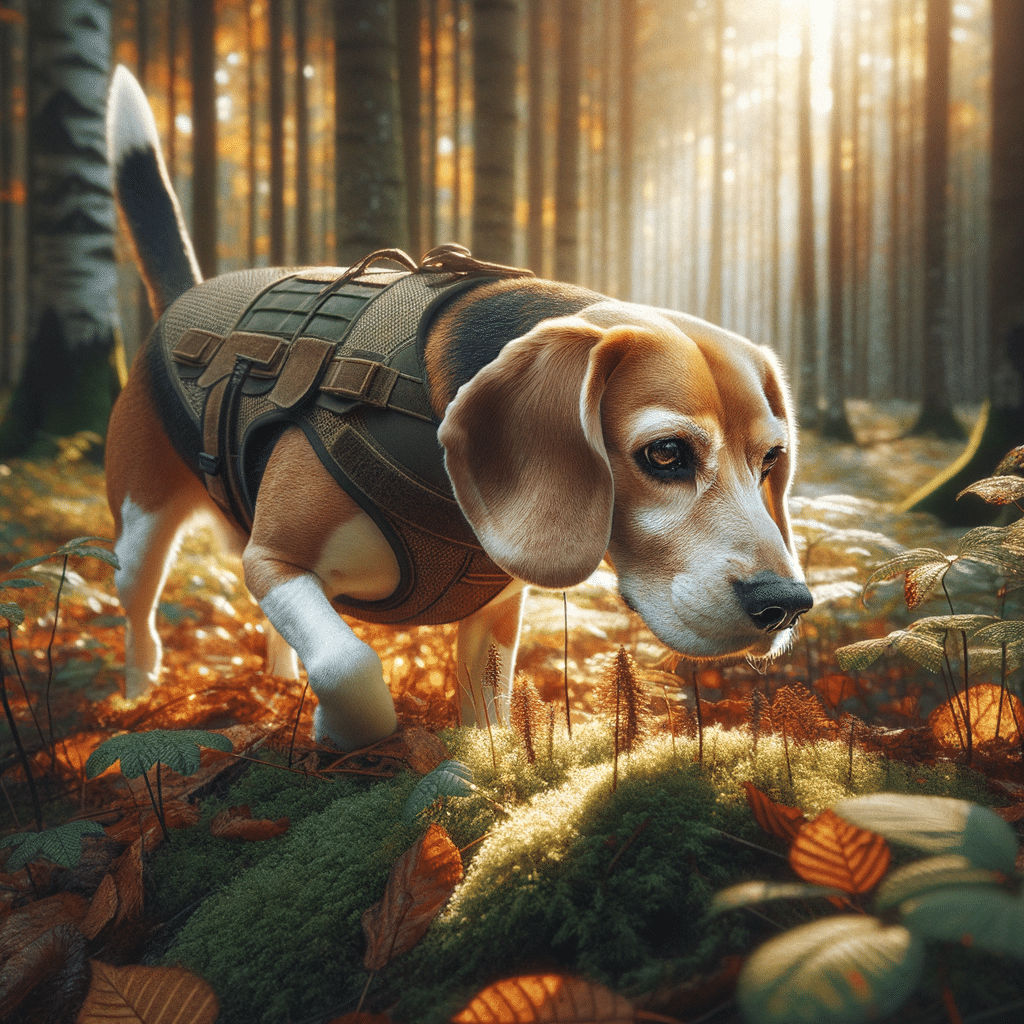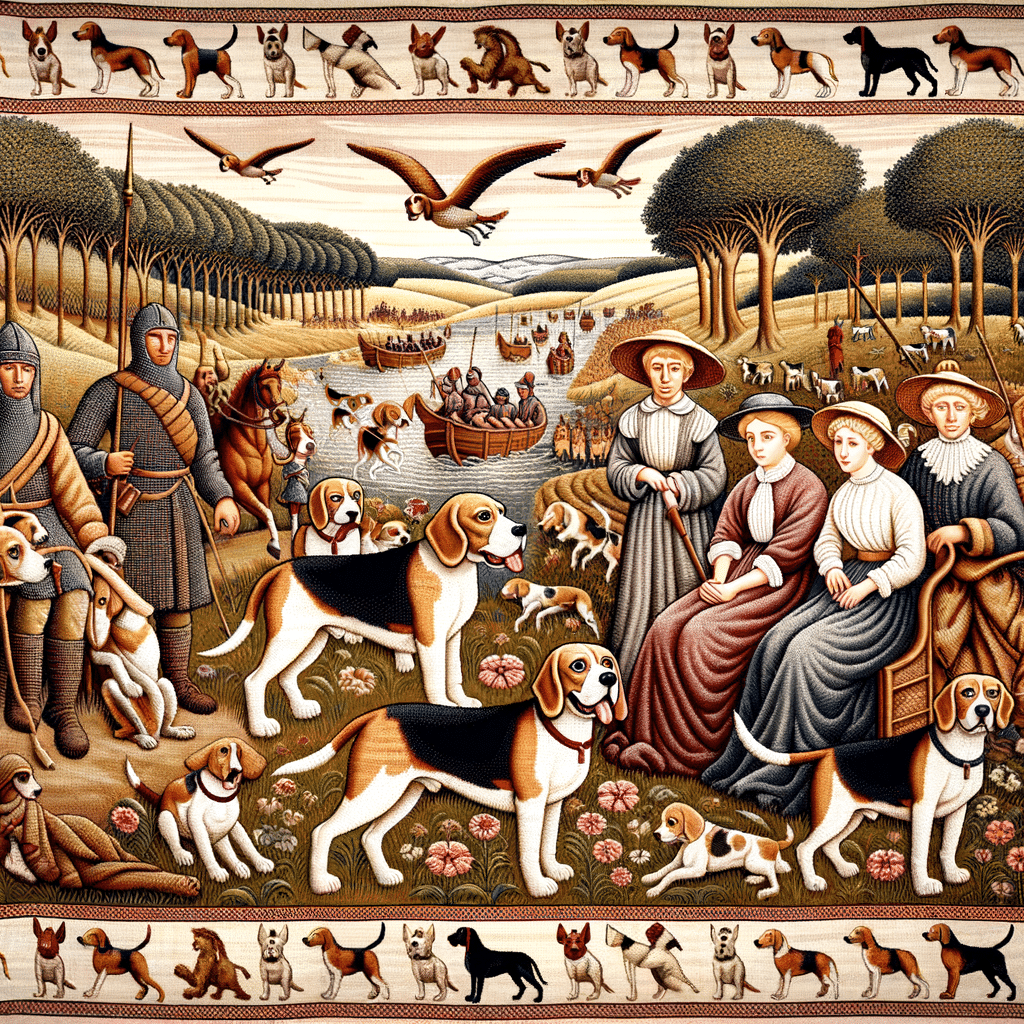Beagles have a distinctive appearance and pleasant temperament, making them a popular choice as a companion and pet. Beagles fall into the small to medium-sized category, with their height ranging from under 13 to 15 inches at the shoulder based on the breed standard. This places them comfortably in the size range that suits both apartment living and requires a manageable level of exercise, distinguishing them from large breed counterparts.
In This Article
Their popularity partly stems from their manageable size, which aligns well with an active household or those seeking a pet of moderate stature. Beagles are renowned for their friendly temperament, which easily fits the role of a family dog due to their sociability and energetic nature. As scent hounds once bred for hunting, beagles possess innate curiosity and vigor, traits they show while playing and in everyday activities. These characteristics, their historical background, and the care they require have cemented their reputation as a breed well-suited to various environments, from rural settings to suburban homes.
Highlights
- Beagles are a small to medium-sized, not a large, dog breed.
- Their friendly nature and size make them a popular pet suitable for various living situations.
- Beagles require moderate exercise, aligning with their origins as energetic hunting dogs.
Physical Characteristics
Beagles are medium-sized dogs with distinct coat colors that fall within a specific weight and height range.
Size and Weight
Beagles typically come in two size variants:
- 13-inch variety, which is 13 inches or less at the shoulder
- 15-inch variety, which is 13 to 15 inches at the shoulder
The average weight for a Beagle ranges from 18 to 30 pounds for both size varieties
This breed is solidly built but not considered large compared to breeds like the Labrador Retriever or the German Shepherd.
Identifiable Coat Colors and Patterns
A beagle’s coat is short and weather-resistant. The standard beagle coat color includes combinations of the following:
- Black
- Tan
- Red
- White
- Lemon
The coat most commonly exhibits a tricolor pattern of white, brown, and black with a white-tipped tail, but beagles can also come in two-color patterns, such as red and white or lemon and white.
Behavior and Temperament
Beagles have a distinct temperament characterized by friendliness and energy. Understanding their behavior, especially their vocal habits and need for regular activity, is essential for potential owners.
General Temperament
Beagles are known for their friendly and playful nature, often described as merry. They thrive with others, are particularly affectionate with families, and are good with children and other pets. These dogs display high energy and playfulness, necessitating adequate interaction and mental stimulation. The breed’s intelligence contributes to its trainability, although consistency in training is critical due to its sometimes independent nature.
Barking Tendencies and Exercise Needs
The tendency to bark is notable in beagles, manifesting as howling and baying when left alone or not sufficiently stimulated. This tendency stems from their breeding as hunting dogs, using their bark to alert hunters.
Regular exercise is crucial to mitigate potential destructive behaviors rooted in boredom. They benefit from daily walks and play sessions to burn off energy. An underexercised Beagle might resort to unwanted behaviors, such as excessive barking or digging. Their exercise needs are not only physical but also mental, which helps them harness their high energy levels and maintain their overall well-being.
Breed History and Recognition
This section explores the beagle’s development as a hunting dog and its formal recognition by canine institutions.
Origins and Hunting History
The beagle has a rich history as a hunting dog, and its origins are in Great Britain. They were bred primarily for hunting small game due to their excellent scent-tracking abilities. Historically, beagles share ancestry with other hounds, such as the Southern hound and possibly the Talbot hound, the latter being a now-extinct breed. They were ideal companions for hunters on foot, which led to varieties such as the smaller pocket beagle that could be carried to the hunting site. The English foxhound also developed the modern beagle, contributing to its stamina and agility.
Kennel Club Classifications
The beagle is recognized by various kennel clubs worldwide for its distinctive traits. The American Kennel Club (AKC) classified it in the hound group when it was first recognized in 1885. The National Beagle Club was established in the United States to help maintain the breed standard and promote the breed’s hunting and companion qualities.
In terms of size, they are small to medium dogs, with the breed group widely recognized and appreciated for its temperament and hunting prowess in field trials and conformation shows.
Health and Care
When considering the health and care of beagles, it is essential to be aware of their everyday health issues and the specifics of their nutrition and grooming needs. As a generally hardy breed, they still require careful attention to diet and regular grooming to maintain their well-being.
Common Health Issues
Health concerns include a propensity to several hereditary health problems prospective owners should consider.
Obesity is a frequent concern, largely preventable with a well-managed diet and exercise. Genetic conditions like hip dysplasia, a malformation of the hip joint, and hypothyroidism, where the thyroid gland doesn’t produce enough hormones, are also seen in the breed. Epilepsy is another condition that can affect beagles and requires lifelong management.
This breed is also susceptible to ear infections due to its long, floppy ears, which can trap moisture and debris. Regular checks are crucial to prevent such infections. Cherry eye, an eye condition where the gland under the third eyelid protrudes, is another condition that may affect beagles.
Nutrition and Grooming
Nutrition plays a crucial role in a beagle’s health. A balanced diet matched to their age, size, and activity level helps prevent obesity and maintains their energetic nature. A beagle’s diet should include high-quality dog food with a solid balance of proteins, fats, and carbohydrates.
When it comes to grooming, beagles are a low-maintenance breed due to their short coat. They are, however, moderate shedders and benefit from the dog owner brushing them weekly to remove loose fur and distribute skin oils. They should have baths every two to four weeks, but frequency can depend on their activity level and lifestyle. Particular attention should be given to their ears during grooming sessions to avoid ear infections, which they are predisposed to due to their ear structure. Regular grooming, which includes nail trimming and dental care, is also necessary to keep a beagle healthy.
Frequently Asked Questions
When considering bringing a beagle into one’s home, prospective owners often have questions about the breed’s size, temperament, pricing, variations, maturity, and weight gain.
What is the average size of a full-grown beagle?
A full-grown beagle typically measures 13 to 15 inches and weighs 20 to 30 pounds. It is classified as a small to medium-sized dog breed.
How do the temperaments of beagles compare with other dog breeds?
Beagles are known for their friendly and pleasant nature. They are energetic and playful, often described as carefree and optimistic. Beagles are more good-natured and adaptable than other breeds, making them suitable for families.
What are the general price ranges for purchasing a beagle?
Purchasing a beagle can range from $400 to $1,200. Price variations are influenced by pedigree, breeder reputation, and geographic location.
What are some common variations in type within the beagle breed?
Common variations within the beagle breed include two recognized size standards: those standing under 13 inches and those with a wither (shoulder) height of 13 to 15 inches. Additionally, beagle coat colors and patterns can vary widely.
At what age is a beagle considered fully mature?
Beagles are considered fully mature at around 18 months of age. Their physical and emotional development is typically complete by this time.
How much weight can you expect a healthy beagle to gain throughout its development?
A healthy beagle puppy can be expected to gain weight steadily until they reach their full adult size at about 1.5 years. Puppies may double their weight by 6-8 weeks of age and then continue to develop to their total adult weight of 20 to 30 pounds.






